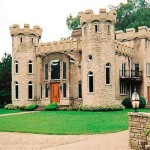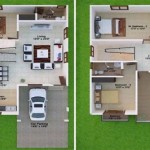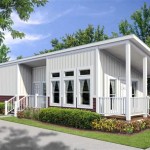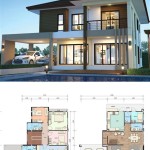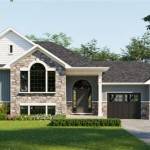House Plans with Atrium: Bringing the Outdoors In
Atrium house plans offer a unique blend of indoor and outdoor living, creating a bright, airy, and naturally lit space within the home. These designs revolve around a central, open-air or skylight-covered courtyard, bringing a touch of nature into the heart of the dwelling. This architectural feature provides numerous benefits, from enhanced natural light and ventilation to increased privacy and a connection with the natural world.
Benefits of Atrium House Plans
Integrating an atrium into a house plan presents several advantages:
*Natural Light:
Atriums flood the surrounding rooms with natural light, reducing the need for artificial lighting and creating a brighter, more welcoming atmosphere. *Improved Ventilation:
The open space of an atrium promotes natural airflow, improving indoor air quality and reducing reliance on mechanical ventilation systems. *Connection with Nature:
An atrium brings the outdoors in, providing a tranquil space to enjoy nature and fostering a sense of calm and well-being. *Increased Privacy:
By orienting living spaces inward towards the atrium, homeowners gain privacy from neighbors and the street while still enjoying natural light and views. *Enhanced Aesthetics:
An atrium serves as a visually stunning focal point, adding architectural interest and creating a unique sense of space. *Flexible Design Options:
Atriums can be adapted to a variety of architectural styles and climate conditions, making them a versatile design element. *Potential Energy Savings:
Increased natural light and ventilation can contribute to lower energy bills by reducing the need for artificial lighting and climate control.Types of Atrium Designs
Atrium designs can be categorized based on several factors, including their location within the house, their covering, and their overall style.
*Central Atrium:
Situated in the center of the house, the central atrium acts as the heart of the home, with surrounding rooms branching outwards. *Entry Atrium:
Located near the entrance, an entry atrium creates a dramatic first impression and welcomes visitors with natural light and greenery. *Side Atrium:
Positioned along the side of the house, a side atrium offers privacy and a connection to nature while maximizing natural light for adjacent rooms. *Covered Atrium:
These atriums feature a roof or skylight, offering protection from the elements while still allowing natural light to filter through. *Open-Air Atrium:
Open-air atriums create a direct connection to the outdoors, allowing for natural ventilation and a seamless transition between indoor and outdoor spaces.Considerations for Atrium House Plans
While atrium designs offer numerous benefits, it's crucial to consider potential challenges and plan accordingly.
*Climate:
The local climate plays a significant role in the design and functionality of an atrium. In hot climates, shading and ventilation are crucial to prevent overheating. In colder climates, proper insulation and glazing are essential for maintaining comfortable temperatures. *Maintenance:
Atriums require regular maintenance, including cleaning of the glazing, pruning of plants, and upkeep of any water features. *Privacy:
While atriums can enhance privacy, careful consideration of the layout and landscaping is essential to ensure desired levels of seclusion. *Cost:
Constructing an atrium can be more expensive than traditional room additions due to the specialized materials and construction techniques involved. *Heating and Cooling:
Depending on the climate and design, atriums can impact heating and cooling costs. Proper insulation, ventilation, and shading strategies are essential for energy efficiency.Incorporating Plants and Landscaping
Plants and landscaping play a vital role in creating a thriving and visually appealing atrium. Choosing the right plants is essential for creating a healthy and sustainable indoor ecosystem.
*Climate Considerations:
Select plants that are well-suited to the local climate and the specific conditions within the atrium, considering factors such as light levels, temperature, and humidity. *Maintenance Requirements:
Choose low-maintenance plants that are easy to care for and require minimal pruning and watering. *Aesthetic Appeal:
Select plants that complement the overall style of the home and create a visually pleasing and harmonious environment. *Vertical Gardening:
Utilize vertical space by incorporating trellises, hanging planters, and green walls to maximize greenery and create a lush, vibrant atmosphere. *Water Features:
Incorporating a water feature, such as a fountain or pond, can add a soothing element and enhance the natural ambiance of the atrium.Integrating the Atrium with the Home's Design
Successfully integrating an atrium into the overall design of the home is key to its functionality and aesthetic appeal.
*Flow and Circulation:
The atrium should be seamlessly integrated into the flow of the house, allowing for easy movement between the atrium and surrounding rooms. *Material Selection:
Choose materials that complement the existing architectural style of the home and create a cohesive design. *Furniture and Decor:
Select furniture and decor that enhance the natural beauty of the atrium and create a comfortable and inviting space. *Lighting Design:
Incorporate artificial lighting to complement natural light and create a warm and inviting atmosphere during the evening hours.Examples of Atrium House Plans
Atrium house plans can be adapted to a variety of architectural styles, from modern and minimalist to traditional and Mediterranean.
*Modern Atrium Homes:
Often feature clean lines, large expanses of glass, and minimalist design elements, creating a contemporary and sophisticated aesthetic. *Traditional Atrium Homes:
May incorporate classic architectural details, such as columns, arches, and ornate moldings, to create a timeless and elegant feel. *Mediterranean Atrium Homes:
Often feature terracotta tiles, stucco walls, and wrought iron accents, evoking a warm and inviting Mediterranean atmosphere.Building an Atrium: Key Considerations
Building an atrium requires careful planning and execution to ensure its structural integrity and long-term functionality.
*Structural Engineering:
Consult with a structural engineer to ensure the atrium is properly designed and constructed to withstand the elements and support the weight of the roof or skylight. *Glazing and Insulation:
Select high-quality glazing materials that provide optimal insulation and energy efficiency. *Waterproofing:
Ensure proper waterproofing measures are in place to prevent leaks and moisture damage. *Permits and Regulations:
Obtain all necessary permits and approvals from local authorities before beginning construction.By carefully considering these factors, homeowners can create a beautiful and functional atrium that enhances their living space and brings the beauty of nature indoors.

Open Air Atrium Home Plan 60533nd Architectural Designs House Plans

Ranch Style House Plan 2 Beds Baths 1480 Sq Ft 888 4 Eichler Plans Vintage

Modern House Plan With 3 Bedrooms And 2 5 Baths 3335

Atrium Single Y House Design With 4 Bedrooms Mojo Homes

Atrium House Free Design 3d Floor Plans By Planner 5d

Sun Plans Atrium Breeze 3

Atrium Free Design 3d Floor Plans By Planner 5d

4 Bed House Plan With Central Atrium 60505nd Architectural Designs Plans

Tuscan Floor Plan 4 Bedrms 3 Baths 2609 Sq Ft 153 1141

Modern House Plan With 4 Bedrooms And 2 5 Baths 3255

